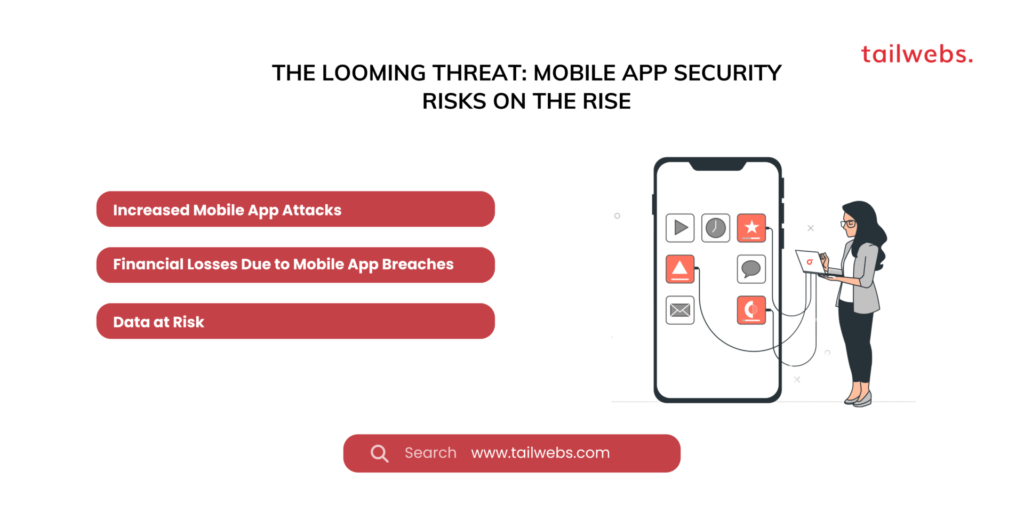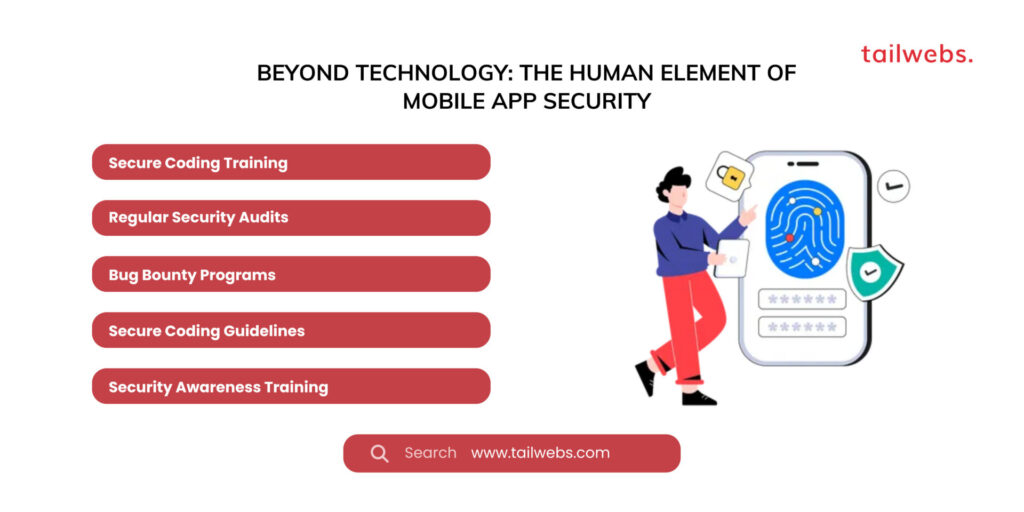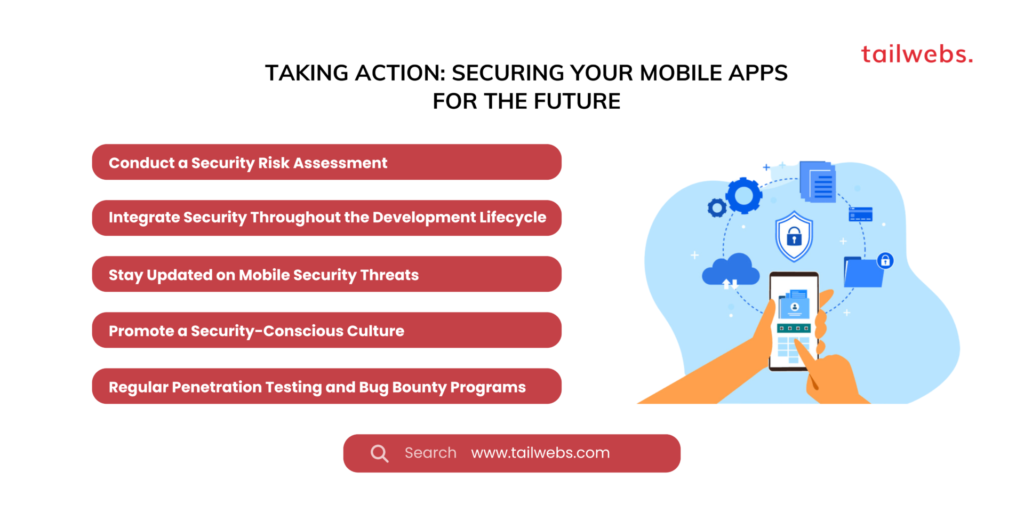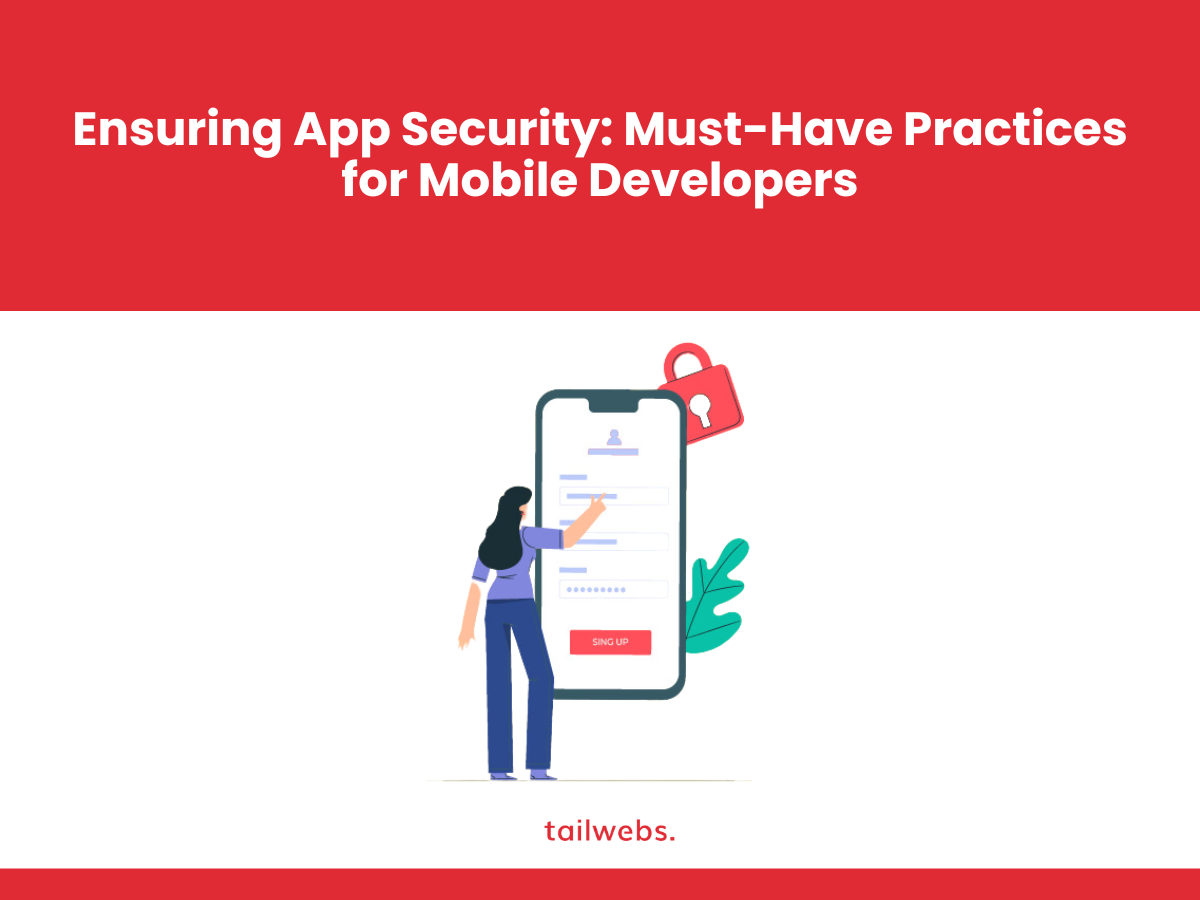In today’s mobile-driven world, applications have become an indispensable part of our lives. We rely on them for everything from communication and entertainment to banking and healthcare. However, with this growing dependence comes a rising concern – mobile app security. As the number of mobile apps explodes, so do the threats posed by malicious actors. For mobile developers, ensuring app security is no longer optional; it’s a critical responsibility.
This comprehensive guide explores the current mobile app security landscape, unveils must-have practices for mobile developers, and equips you with the knowledge to safeguard your users’ data and build trust in the digital marketplace.
The Looming Threat: Mobile App Security Risks on the Rise
Mobile app security breaches can have devastating consequences. Here’s a glimpse into the concerning reality:
Increased Mobile App Attacks:
A report by Verizon’s 2023 Mobile Security Index found that 43% of mobile security incidents involved compromised applications.
Financial Losses Due to Mobile App Breaches:
The average cost of a mobile data breach reached a staggering $3.79 million in 2023, according to the IBM Cost of a Data Breach Report 2023.
Data at Risk:
Mobile apps often house sensitive user data such as login credentials, financial information, and personal details. A data breach can expose this information to unauthorized individuals, leading to identity theft and financial losses.
These statistics paint a clear picture of the urgency for robust mobile app security practices. By adhering to the best practices outlined below, mobile developers can significantly mitigate these risks and build apps that users can trust.

Building a Secure Foundation: Essential Mobile App Security Practices
Here are the cornerstones of secure mobile app development:
Secure Coding Practices:
Input Validation and Sanitization:
Always validate and sanitize user input to prevent malicious code injection attacks like SQL injection and Cross-Site Scripting (XSS) that can steal user data or hijack app functionality.
Secure Data Storage:
Store sensitive user data securely using encryption techniques. Avoid storing sensitive data on the device itself whenever possible.
Use of Secure Libraries and Frameworks:
Utilize well-established and secure libraries and frameworks that adhere to industry security standards.
Secure Communication Channels:
Enforce HTTPS for all communication between the app and the backend server to encrypt data transmission and prevent man-in-the-middle attacks.
Regular Security Testing:
Integrate security testing throughout the development lifecycle. Conduct static code analysis, dynamic application security testing (DAST), and mobile penetration testing to identify and address vulnerabilities early on.
Code Signing and Tamper Detection:
Implement code signing to ensure the app originates from a trusted source and utilize tamper detection mechanisms to identify and prevent attempts to modify the app’s code.
By adhering to these fundamental practices, you establish a solid foundation for secure mobile app development.
Advanced Mobile App Security Measures for 2024
As mobile app development practices evolve, so too do the security measures required to stay ahead of cybercriminals. Here are some advanced security considerations for 2024:
API Security:
With the increasing use of APIs in mobile apps, ensure robust API security measures are in place. Implement authentication, authorization, and encryption mechanisms to protect sensitive data transmitted through APIs.
Data Encryption at Rest and in Transit:
Encrypt data at rest (stored on the device) and in transit (being transmitted) to minimize the risk of data breaches even if attackers gain access to the device or network.
Secure Key Management:
Implement secure key management practices to protect encryption keys. Consider using a hardware security module (HSM) for storing and managing cryptographic keys.
Biometric Authentication:
Leverage biometric authentication methods like fingerprint scanning or facial recognition for secure user login and access control, especially for apps handling sensitive data.
App Shielding and Runtime Application Self-Protection (RASP):
Explore app shielding techniques to obfuscate app code and make it more difficult for attackers to reverse engineer and exploit vulnerabilities. Additionally, consider implementing RASP solutions that monitor app behavior at runtime to detect and prevent attacks.
By incorporating these advanced measures into your mobile app development process, you significantly enhance the overall security posture of your apps and provide an additional layer of protection for user data.
Beyond Technology: The Human Element of Mobile App Security
While technology plays a critical role in securing mobile apps, the human element remains a vital consideration. Here’s how to address the human aspect of security:
Secure Coding Training:
Invest in security awareness training for your development team to equip them with the knowledge and skills to write secure code.
Regular Security Audits:
Conduct regular security audits of your development process and codebase to identify potential vulnerabilities and ensure adherence to best practices.
Bug Bounty Programs:
Consider implementing a bug bounty program to incentivize white hat hackers to identify and report vulnerabilities in your mobile app. This proactive approach can help you discover and address security issues before they are exploited by malicious actors.
Secure Coding Guidelines:
Utilize established secure coding guidelines for mobile development, such as the OWASP Mobile Top 10 and MSTG Mobile Security Testing Guide, to identify and mitigate common mobile app vulnerabilities.
Security Awareness Training:
Educate all personnel involved in the mobile app development lifecycle, including developers, testers, and product managers, on mobile app security best practices.
By addressing the human element of mobile app security, you empower your team to become active participants in safeguarding your apps and user data.

Essential Tools and Resources for Secure Mobile App Development
Here are some valuable tools and resources to elevate your secure mobile app development practices:
Static Application Security Testing (SAST) Tools:
SAST tools analyze your mobile app code to identify potential security vulnerabilities. Popular options include Fortify On-Demand for Mobile, Veracode Mobile, and IOMA Sentinel.
Dynamic Application Security Testing (DAST) Tools:
DAST tools simulate real-world attacks to identify vulnerabilities in your mobile app. Popular options include Mobile Security Framework (MobSF), UberScan, and Cobalt Strike.
Mobile Penetration Testing Tools:
Mobile penetration testing tools allow you to conduct in-depth security assessments of your mobile app to identify critical vulnerabilities. Popular options include OWASP ZAP Mobile, Appium Inspector, and pentester.io.
Secure Coding Resources:
Several online platforms offer secure coding resources and training specifically for mobile app development. Consider platforms like OWASP, The Linux Foundation, and Codementor.
App Shielding and RASP Tools:
Explore app shielding tools like AppGuard and obfuscation tools like ProGuard to protect your app code. Additionally, consider RASP solutions like GuardMobile and Approov for real-time application protection.
By leveraging these tools and resources, you can streamline your secure development process, identify and address vulnerabilities early in the development lifecycle, and build more robust and secure mobile applications.
Taking Action: Securing Your Mobile Apps for the Future
Here are concrete steps you can take to implement these best practices and safeguard your mobile applications:
Conduct a Security Risk Assessment:
Start by conducting a comprehensive security risk assessment of your mobile app to identify potential threats and vulnerabilities.
Integrate Security Throughout the Development Lifecycle:
Incorporate security practices into every stage of your mobile app development process, from initial design and coding to testing, deployment, and ongoing maintenance.
Stay Updated on Mobile Security Threats:
Continuously monitor the latest mobile security threats and update your security measures accordingly.
Promote a Security-Conscious Culture:
Foster a culture of security awareness within your organization by educating your team on best practices and encouraging a security-first mindset.
Regular Penetration Testing and Bug Bounty Programs:
Schedule regular penetration testing to proactively identify and address vulnerabilities. Consider implementing a bug bounty program to leverage the expertise of the security research community.
By following these actionable steps and continuously refining your approach, you can significantly enhance the security posture of your mobile applications. This not only protects user data and builds trust but also safeguards your reputation and ensures the long-term success of your mobile apps in the ever-evolving digital landscape.

Conclusion: Building Trust Through Secure Mobile App Development
In conclusion, secure mobile app development is not a one-time endeavor; it’s an ongoing process that requires continuous vigilance and adaptation. By adhering to the best practices outlined in this guide, leveraging valuable tools and resources, and fostering a security-conscious culture within your organization, you can build trust with your users and establish your mobile applications as reliable and secure solutions in the ever-growing mobile app market. Remember, in today’s digital world, security is not just an option – it’s a necessity. Embrace the principles of secure mobile app development, safeguard your users’ data, and empower your apps to thrive in the dynamic mobile landscape.





